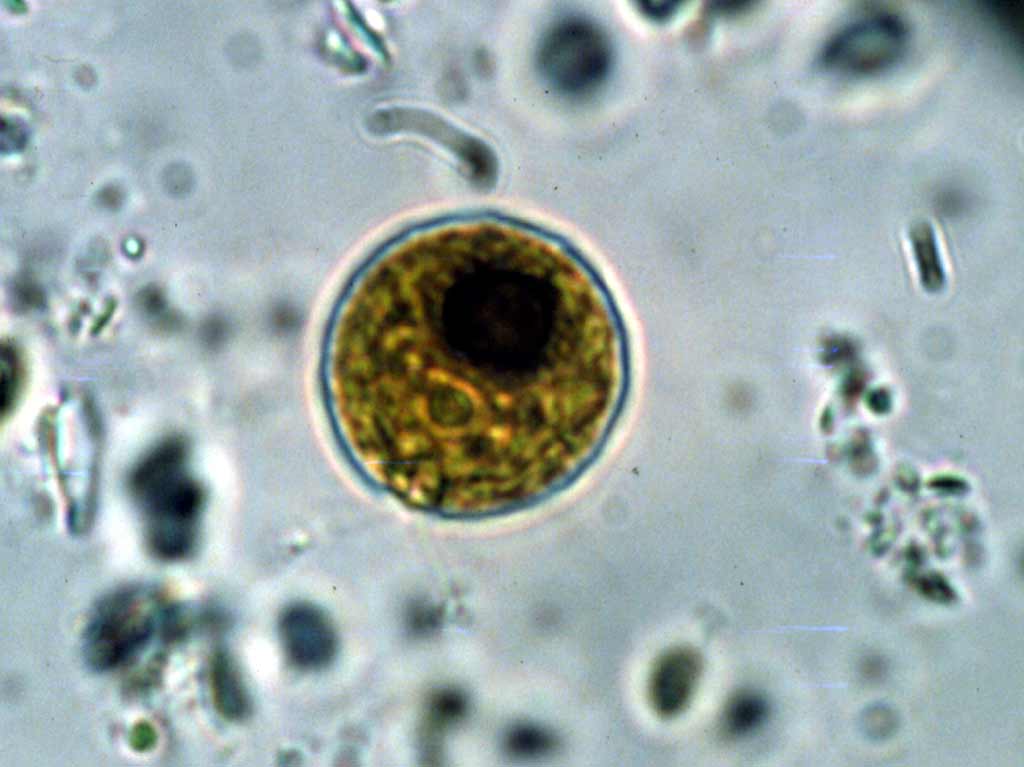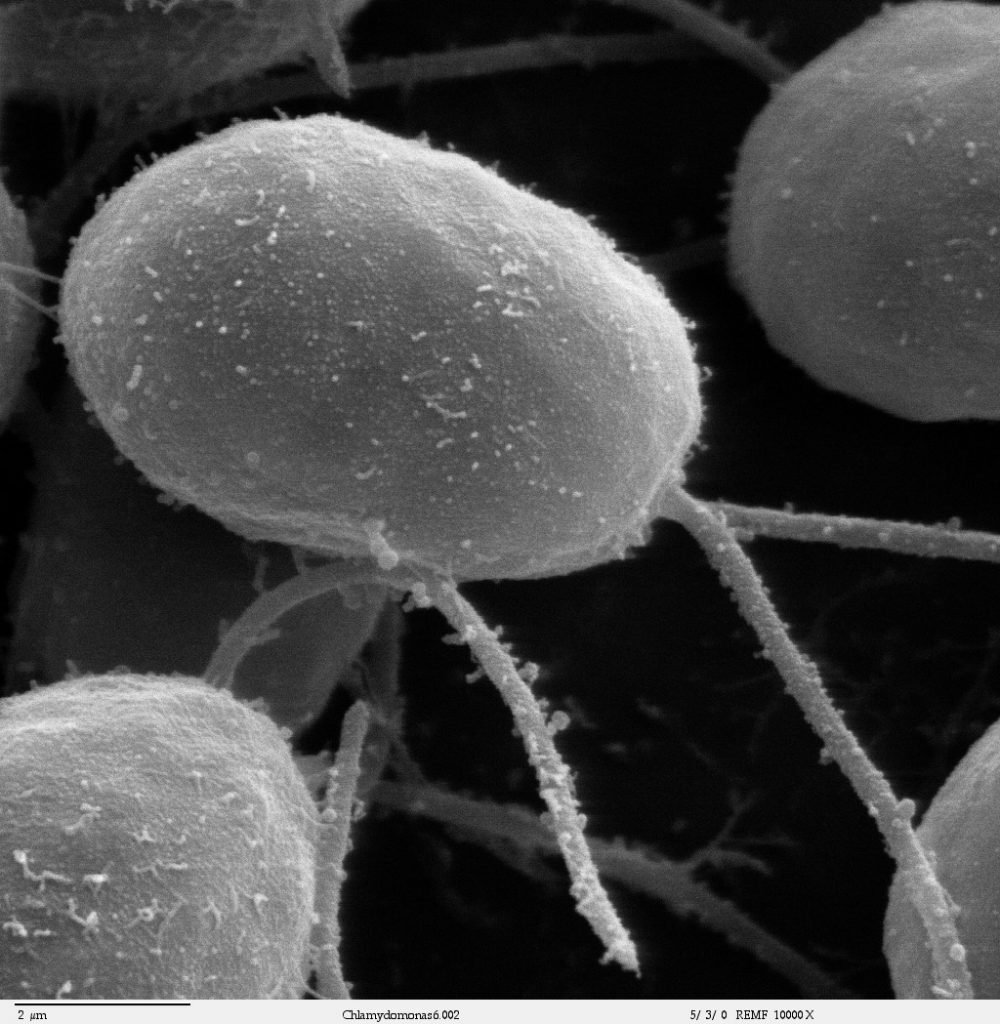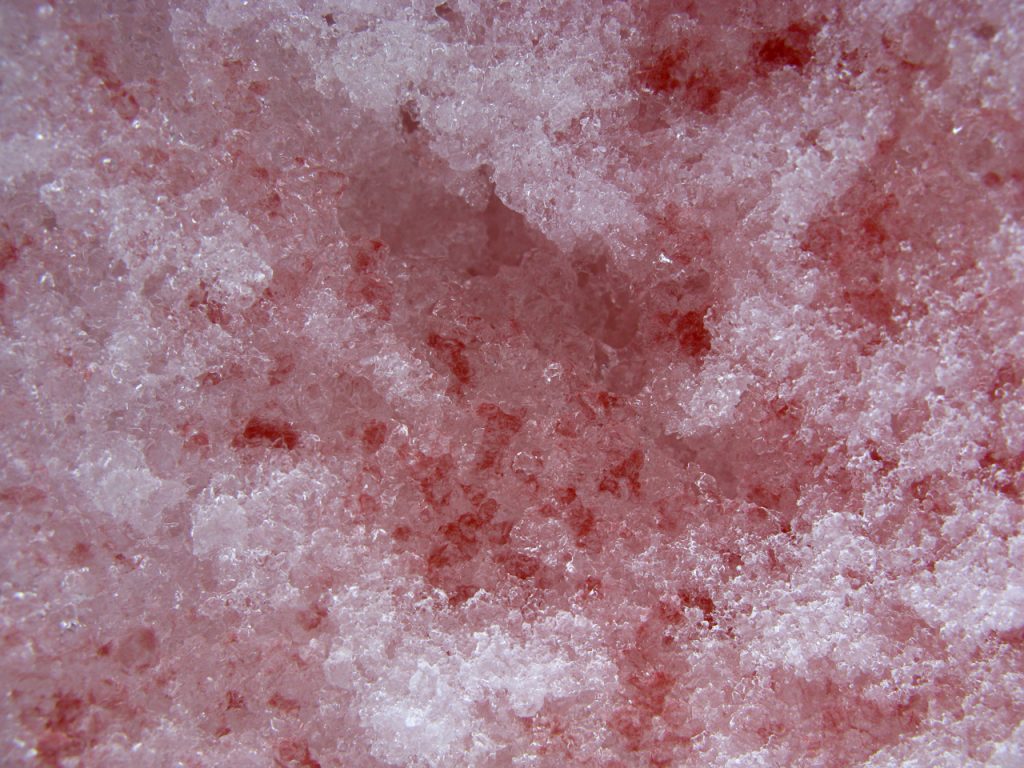Chlamydomonas, a small unicellular green alga
Chlamydomonas, a unicellular green algae

Chlamydomonas is a unicellular organism in the Chlorophyta group (the green algae). It is included here not because one is likely to encounter it (except in laboratories and botany classes) but because it represents one of the many forms found in the green algae and also because it is a ‘model organism’, one that has proven to be useful in the study of biology. Chlamydomonas is certainly not a typical green algae but one could say that about any member of the group that includes filamentous forms (Oedogonium), sheet forming forms (Ulva), siphonaceous forms (Caulerpa and Cladophora), and multicellular forms (Chara) and even unicellular forms that are 1000 times bigger (Acetabularia) than Chlamydomonas.

Taxonomy and Phylogeny
The green algae (= Chlorophyta) are a group of eukaryotes that have some characteristics in common with plants (they are photosynthetic, possess both chlorophyll a and b, generally store carbohydrate as starch and have cellulose cell walls. But they also differ from plants in several ways: most are not multicellular, being either unicellular, siphonaceous or filamentous; they do not retain embryos inside the previous generation as all plants do; few grow on land as almost all plants do. Because land plants are thought to have originated from ancestral ‘green-algal like organisms’ putting green algae and plants in separate kingdoms, as done in the ‘five-Kingdom’ classification, with a Protist Kingdom that includes green algae and a separate Plant Kingdom, is very artificial. One remedy is to put green algae in the plant kingdom and some observers do this. Another alternative is to simply throw out the Kingdom level of taxonomy and this is what many modern treatments do. If this were done then one might split the green algae into two phyla, one that includes land plants (Streptophyta) and one that doesn’t (Chlorophyta).

Structure
Chlamydomonas is a small (<10 um) unicellular, mobile organism. It is roughly spherical in shape with two anterior flagellae that it uses to ‘swim’ in a breast-stroke-like manner. Unlike many green algae, the cell wall is not made of cellulose (as it is in land plants) but instead of a glycoprotein.
Reproduction
Chlamydomonas reproduces asexually when haploid cells divide (often multiple times) and form 2, 4, 8 or more daughter cells, that are then released. Sexual reproduction occurs when special cells (gametes) are produced that are capable of attaching to one another, first by their flagellae, and later by their anterior ends, thereby achieving protoplast fusion and forming a zygote. This develops into a zygospore (dormant, resistant cell) in which meiosis occurs. Eventually zygospore germination occurs, releasing haploid mobile cells (see discussion in Chapter 11).
Matter and energy
Chlamydomonas is a typical photoautotroph, using the energy of sunlight to synthesize carbohydrates from carbon dioxide/bicarbonate ion and water and then using the carbohydrates as a both an energy source in cellular respiration and also as building materials to synthesize a variety of biomolecules. However, it can live in the dark if supplied with acetate — (why this is significant is considered in Chapter 19). In addition to the accumulation of carbon, oxygen and hydrogen in carbohydrates, Chlamydomonas accumulates 14 mineral elements which are present in dilute levels in its aquatic habitat.
Interactions

Although the genus Chlamydomonas is found primarily in fresh and salt water habitats, it also can be found in soil (in the upper regions that get enough sunlight) and in snow (specifically C. nivalis, the organisms that causes ‘watermelon snow’, producing a red pigment that is thought to protect it from high light intensities. Significant to the alga’s success is the fact that the organism is mobile and phototactic, using a pigment similar to the rhodopsin of human eyes to direct its movement. As phytoplankton, Chlamydomonas is eaten by small heterotrophs, e.g. Daphnia.
Further Reading and Viewing
- “Chlamydomonas” by M.D. Guiry
- “Reasons to Rejoice in Green Algae: Essay” by Lynne Quarmby, discusses reasons to study different organisms
- “Watermelon Snow: A Strange Phenomenon Caused by Algal Cells of The Chlorophyta” by W.P. Armstrong
Media Attributions
- Chlamydomonas © Environmental Protection Agency is licensed under a Public Domain license
- Chlamydomonas (10000x) © Dartmouth Electron Microscope Facility, Dartmouth College is licensed under a Public Domain license
- Chlamydomonas reinhardtii
- Chlamydomonas1 (Antarctique) © Serge Ouachée is licensed under a CC BY-SA (Attribution ShareAlike) license

